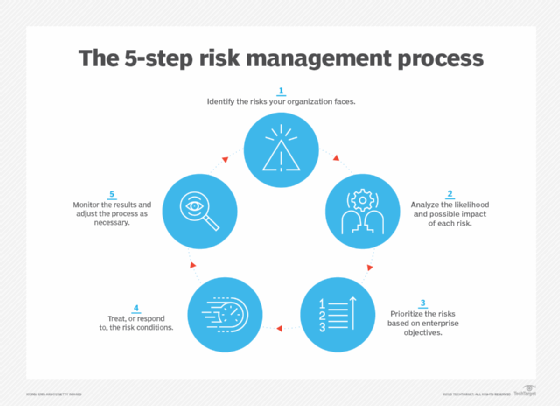The Crucial Importance of Risk Management in Protecting Business Assets
Checking out the Importance of Risk Management for Effective Decision-Making Methods
In the intricate world of company, Risk Management becomes a critical consider the decision-making procedure. The ability to identify prospective risks and possibilities, and plan accordingly, can spell the difference in between success and failing. With devices such as SWOT and PESTEL, organizations are equipped to make informed selections, fostering strength and flexibility in an ever-changing atmosphere. Wondering exactly how this works? Let's unbox the dynamics even more.
Comprehending the Idea of Risk Management
Risk Management, a critical component in decision-making, is typically misunderstood or oversimplified. Usually, it refers to the identification, analysis, and prioritization of threats to minimize, monitor, and control the possibility or effect of regrettable events. It's not merely about stopping adverse outcomes, however likewise regarding acknowledging possible possibilities. Risk Management includes organized and disciplined techniques, utilizing data and insightful evaluations. It calls for a comprehensive understanding of the organization's context, objectives, and the prospective dangers that might obstruct them. From economic uncertainties, legal obligations, tactical Management mistakes, to mishaps and natural calamities, it addresses numerous threats. Significantly, efficient Risk Management is not stagnant; it's a continuous, forward-looking process that develops with transforming circumstances.
The Function of Risk Management in Decision-Making Processes
In the realm of critical preparation and business operations, Risk Management plays an essential role in decision-making procedures. It assists in recognizing prospective risks and uncertainties that might influence the accomplishment of service objectives. By tracing these dangers, firms can formulate techniques to alleviate their effect, ensuring company connection and security. Risk Management thus ends up being an essential tool in decision-making, assisting leaders to make educated selections based upon a detailed understanding of the threats involved. It motivates an aggressive method, allowing companies to prepare and anticipate for possible future circumstances. This substantially lowers the chance of negative consequences, advertising much more efficient and reliable decision-making techniques. Risk Management serves as an important part in the decision-making processes of any company.

Exactly How Risk Management Improves Strategic Planning
In the context of tactical preparation, Risk Management plays a pivotal duty. Starting with the identification of possible dangers, it additionally expands to the execution of Risk reduction steps. The role of Risk Management is not fixed however vibrant, as it demands constant surveillance and adjusting of methods.
Determining Possible Dangers

Applying Risk Reduction
Risk reduction methods can range from Risk avoidance, Risk transfer, to run the risk of decrease. Each method ought to be customized to the particular Risk, considering its prospective impact and the company's Risk resistance. Efficient Risk mitigation calls for a deep understanding of the Risk landscape and the prospective impact of each Risk.
Monitoring and Adjusting Approaches
Though Risk mitigation is a crucial step in strategic preparation, continual surveillance and change of these approaches is just as crucial. It likewise offers a possibility to examine the success of the Risk Management measures, allowing changes to be made where necessary, additional enhancing critical preparation. Tracking and adjusting Risk Management approaches is a vital element for boosting an organization's durability and calculated preparation.
Instance Researches: Successful Risk Management and Decision-Making
Worldwide of business and money, successful Risk Management and decision-making often function as the columns of flourishing business. One such entity is a multinational oil company that reduced financial loss by hedging versus rising and fall oil prices. In an additional circumstances, a tech startup thrived by recognizing and approving high-risk, high-reward strategies in an review unpredictable market. An international financial institution, faced with regulatory unpredictabilities, effectively navigated the scenario via positive Risk assessment and dynamic decision-making. These cases highlight the worth of astute Risk Management in decision-making procedures. It is not the absence of Risk, however the Management of it, that usually sets apart effective companies from not successful ones. These situations highlight the essential function of Risk Management in strategic decision-making. importance of risk management.
Devices and Strategies for Efficient Risk Management
These devices, such as Risk signs up and heat maps, help in recognizing and analyzing potential risks. Risk feedback strategies, a key component of Risk Management, include accepting, avoiding, transferring, or mitigating risks. With these strategies and devices, decision-makers can browse the complicated landscape of Risk Management, thus promoting educated and reliable decision-making.
Future Patterns in Risk Management and Decision-Making Strategies
As we discover the large landscape of Risk Management, it ends up being obvious that the strategies and devices used today will certainly More Info continue to progress. The principle of Risk culture, where every participant of a company is aware and included in Risk Management, will certainly acquire a lot more prestige. These trends advertise an even more proactive and inclusive approach towards Risk Management and decision-making.
Verdict

Risk Management thus ends up being an essential device in decision-making, helping leaders to make educated selections based on an extensive understanding of the risks included. Risk mitigation methods can vary from Risk evasion, Risk transfer, to run the risk of decrease (importance of risk management). Reliable Risk mitigation requires a deep understanding of the Risk landscape and the potential effect of each Risk. Risk action strategies, an essential part of Risk Management, include approving, preventing, transferring, or mitigating risks. The idea of Risk culture, where every member of a company is conscious and involved in Risk Management, will certainly acquire more prominence